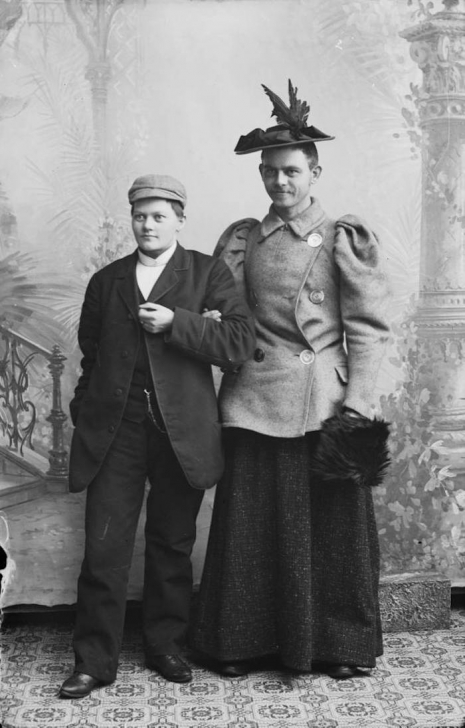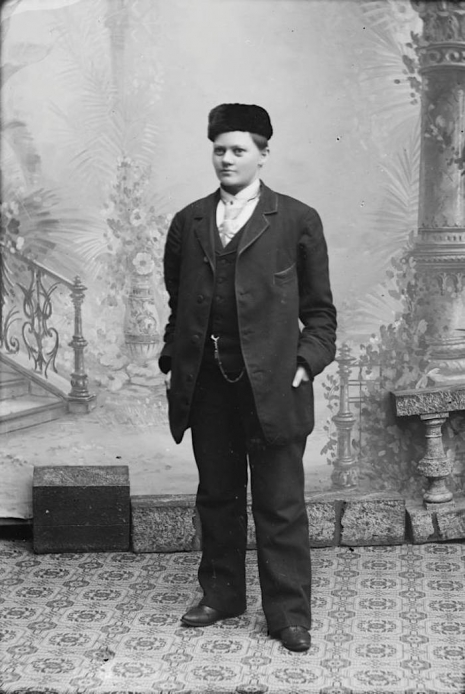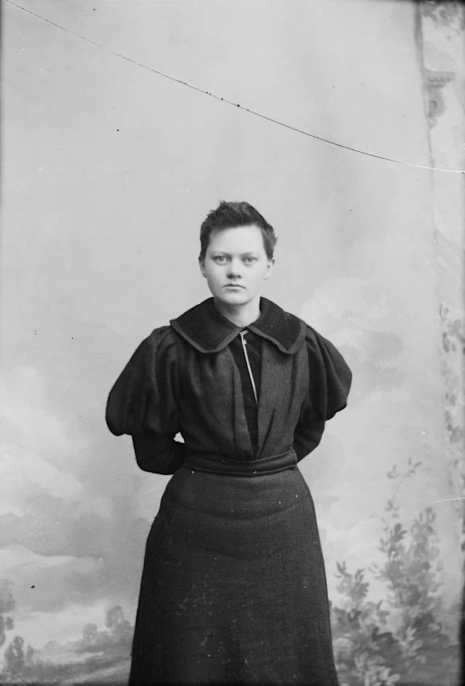
Marie Høeg (1866-1949) had short cropped hair. Bolette Berg (1872-1944) kept hers long. Marie was short. Bolette was taller. They were known to the people of Horten, a busy naval port in Norway, as the two ladies who ran the photography studio called Berg & Høeg. They made their living taking portrait photographs, landscape pictures and the occasional picture of ships. In the late 1800s and early 1900s photography was the latest craze where those who could afford it had their picture taken. There were many such photographic studios in Horten. Berg & Høeg may have been long forgotten had it not been for the discovery some thirty years ago of some 440 of their glass negatives in an old disused barn in Oslo.
Among these glass plates was a box marked “Private.” Inside this box was a set of images featuring Høeg and Berg playing around with traditional gender roles. Høeg dressed as a man with a waxed mustaches, or as a boy with white shirt, cap and cigarette, or in fur pretending to be an Arctic explorer like Roald Amundsen, who led the first expedition to traverse the Northwest Passage in 1903–06.
Berg & Høeg posed with their women friends indulging in some of the worst kind of vices usually attributed to men—smoking, drinking and playing cards. Høeg also posed as husband to an unknown male friend as wife and in a rowing boat as a bowler-hat-wearing suitor to Berg’s elegant object of desire.
The finished photographs would have been shared among their small coterie of friends in Horten. Their friends no doubt laughed at these daring, subversive images which cocked a snook at the strict conventions surrounding sexuality, gender and identity at a time when women were called the “weaker sex,” and forbidden the vote.
Marie Høeg was the main subject of these “private” photographs. During her life she was best known as a pioneering activist for women’s rights. She founded the Horten Branch of the National Association for Women’s Suffrage, the Horten Women’s Council and the Horten Tuberculosis Association. Bolette Berg worked more behind the camera. The two women are believed to have met while studying photography in Finland during the early 1890s. They moved to Horten where they set up a studio together in 1895.
In 1903, the two women left Horten and set up a new studio in Oslo (then called Kristiania) where they had a career producing scenic and portrait postcards. They bought a farm and at some point stored their glass negatives in the barn where these images remained long after both Berg’s and Høeg’s deaths until their discovery in the 1980s.



More of Høeg and Berg’s cross-dressing pictures, after the jump…





